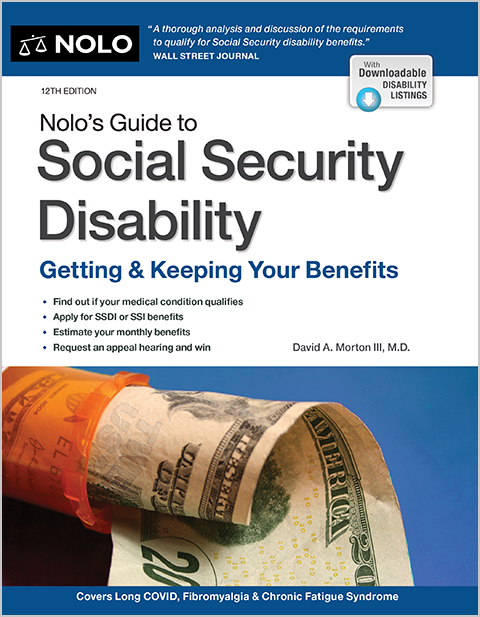If you’re new to Medicare, learn when you can enroll Part A, B, C, and D and when your coverage will start.
While you can sign up for Medicare Part A anytime after age 65, you can only enroll in Medicare Part B, Part C (Medicare Advantage), or Part D during specific times.
Medicare's Initial Enrollment Period
When you can enroll. If you're new to Medicare, you have an Initial Enrollment Period that lasts seven months, during which you can enroll in Part A, B, and/or D. The seven-month period begins three months before you turn 65 and ends three months after the month in which you turn 65.
Part C (Medicare Advantage) has its own initial enrollment period, called an "Initial Coverage Election Period." You can enroll in a Medicare Advantage plan starting three months before your Medicare Part B enrollment is due to take effect (this date can vary) up until three months after your 65th birthday. Or you can add a Medicare Advantage plan during the Open Enrollment Period each fall (see below).
When coverage begins. Your Part A coverage will start on the first day of the month you turn 65, even if you wait until the end of your initial enrollment period to sign up, when you're age 65 and three months.
But your Part B coverage will start on the first day of the month you turn 65 only if you signed up in the three months before your birthday. If you sign up during your birthday month or during the three months after your birthday, your coverage will start the first day of the following month.
If you enroll in a Medicare Advantage Plan, your coverage will generally begin the first day of the month after you enroll (as long as your Part B coverage has started on that date).
Signing Up Late: General Enrollment Period
If you didn't sign up for Medicare when you were first eligible, here's when you can enroll.
Late Enrollment for Part A
When you can late enroll. If you didn't sign up for Medicare Part A when you were first eligible, you can sign up for Part A anytime, without penalty.
When coverage begins. Your Part A coverage will go back to six months before the date you signed up (if you sign up after age 65 1/2).
Late Enrollment for Part B, C and D
When you can late enroll. If you didn't sign up for Medicare Part B when you were first eligible, you can sign up for Part B during a General Enrollment Period, which happens between January 1 through March 31 each year. You will also have from April 1 through June 30 of that year to add a Medicare Advantage plan or a Medicare Part D plan.
When coverage begins. When you sign up for Part B, C, or D during a General Enrollment Period, your coverage will start July 1.
Late sign-up penalty. Individuals who didn't sign up for Medicare Part B when they turned 65 might face a penalty of higher lifetime premiums when they do sign up. However, most individuals who were covered by a group health plan through an employer (or spouse's employer) aren't subject to the penalty. If you didn't sign up for Part B because you had group health benefits through work, you should be able to sign up during your Special Enrollment Period (see below).
Delaying Medicare Due to Work: Special Enrollment Period
If you didn't enroll in Medicare because you were still working, and you were covered under a group health plan based on employment, you have a Special Enrollment Period during which you can sign up for Part A and/or Part B. While you or your spouse are still working and you're still covered under a group health plan, you can sign up anytime.
After your or your spouse's employment ends, your Special Enrollment Period lasts eight months, starting the month after the employment or group health plan ends (whichever happens first). You can sign up for Part B anytime during that period and your coverage will begin the month after you sign up (or right away if you sign up immediately after your employment or group health plan ends).
Special rule for Medicare Advantage or Part D drug plans. You have only two months after the month your employment or group health plan ends to sign up for a Medicare Advantage plan or Part D prescription drug plan (or you can add a Medicare Advantage plan or Part D plan during the Open Enrollment Period each fall). You can enroll in a Medicare Advantage plan starting three months before your Medicare Part B enrollment is due to take effect up to the day before your Part B coverage starts—but again, enrollment must take place within two months of your (or your spouse's) employment or group health plan ending.
When coverage begins. If you sign up for Part B while you are still covered by a group health plan, or during the first full month that you no longer have this coverage, your Part B coverage will begin the first day of the month you sign up. But you can choose, instead, to have your coverage begin with any of the following three months.
If you sign up during any of the remaining seven months of your special enrollment period, your Part B coverage will begin the month after you sign up.
Coverage under a Medicare Advantage plan will begin the first day of the month after you enroll.
Example:
Judy's last day of work is July 1 and her group health plan ends July 31. She has eight months, until April 30, to sign up for Part B without a penalty. But if she wants to join a Medicare Advantage plan, she needs to do so by September 30 (in which case her coverage would start October 1). Instead, on June 15, Judy signs up for Part B coverage to begin on August 1, so that she won't have a gap in coverage. She has only until July 31 to add a Medicare Advantage plan (she must sign up before Part B coverage starts). She adds a Medicare Advantage plan July 20, and it starts August 1.
Making Changes to Medicare: Open Enrollment Periods
Open Enrollment Period. If you already have Medicare Parts A and B, you have an Open Enrollment Period every year between October 15 and December 7. During open enrollment, you can switch from one Medicare Advantage plan to another or from a Medicare Advantage Plan back to traditional Medicare. You can also switch from traditional Medicare (parts A and B) to a Medicare Advantage plan during this time.
When coverage begins. When you switch coverage during the Open Enrollment Period in the fall, your new coverage starts January 1.
Medicare Advantage Disenrollment Period. If you want to switch from a Medicare Advantage Plan back to traditional Medicare, you can do so during open enrollment or during the special Medicare Advantage Disenrollment Period that runs from January 1 through February 14 each year. Once you select a new plan to enroll in, you'll be disenrolled automatically from your old plan when your new plan's coverage begins.
When coverage begins. If you switch back to traditional Medicare during the Medicare Advantage Disenrollment Period, your coverage will start on the first day of the month after the month in which you disenroll.
Medicare Advantage Open Enrollment Period. There is an extra open enrollment period for Medicare Advantage plans. Anyone already enrolled in a Medicare Advantage plan can enroll in a different Medicare Advantage plan or drop an existing Medicare Advantage plan and return to traditional Medicare Parts A and B, between January 1 and March 31 of each year. If you enroll in a plan during this extended enrollment period, your coverage will begin on the first day of the following month.
When coverage begins. When you switch coverage during the Medicare Advantage Open Enrollment Period in the spring, your new coverage starts the first day of the following month.
Special trial period for first year you join a Medicare Advantage plan. If you first join a Medicare Advantage plan during your Initial Enrollment Period, you can drop the plan anytime during the first 12 months. But you can only switch to a new Medicare Advantage plan during the Open Enrollment Period or Medicare Advantage Open Enrollment period (except for five-star plans).
Special rule for highly rated plans. You don't have to wait for an open enrollment period to switch to a Medicare Advantage plan that's rated five stars by Medicare. You can switch to a five-star plan anytime of the year except for the first week of December (and you can only use this exception once per year).
Signing Up for Medicare
If you're collecting Social Security benefits. If you claim Social Security benefits at age 65 or earlier, you will automatically be enrolled in Medicare when you turn 65, in both Part A and Part B. You can disenroll from Part B (by sending in a form that came with your Medicare card) but not from Part A.
To enroll in Part B after age 65 later (when you already have Part A), you can fill out an Application for Enrollment in Medicare Part B (Form CMS40B) and bring it or mail it to a Social Security office.
If you're not collecting Social Security benefits. If you are 64 years and nine months or older and you have not started collecting Social Security benefits, you can sign up for both Part A and Part B online at https://secure.ssa.gov/iClaim/rib (you cannot sign up online for Part B only).
How Medicare enrollment affects HSAs. Note that, when you're enrolled in Part A, you are no longer allowed to make pre-tax contributions to your health savings account (HSA), though you can continue to use the funds already in your HSA account. Since anyone collecting Social Security retirement benefits has to be enrolled in Part A, this means that no one collecting Social Security can contribute to an HSA.
For the 2025 Medicare premiums and deductibles, see Nolo's 2025 Medicare cost update.


